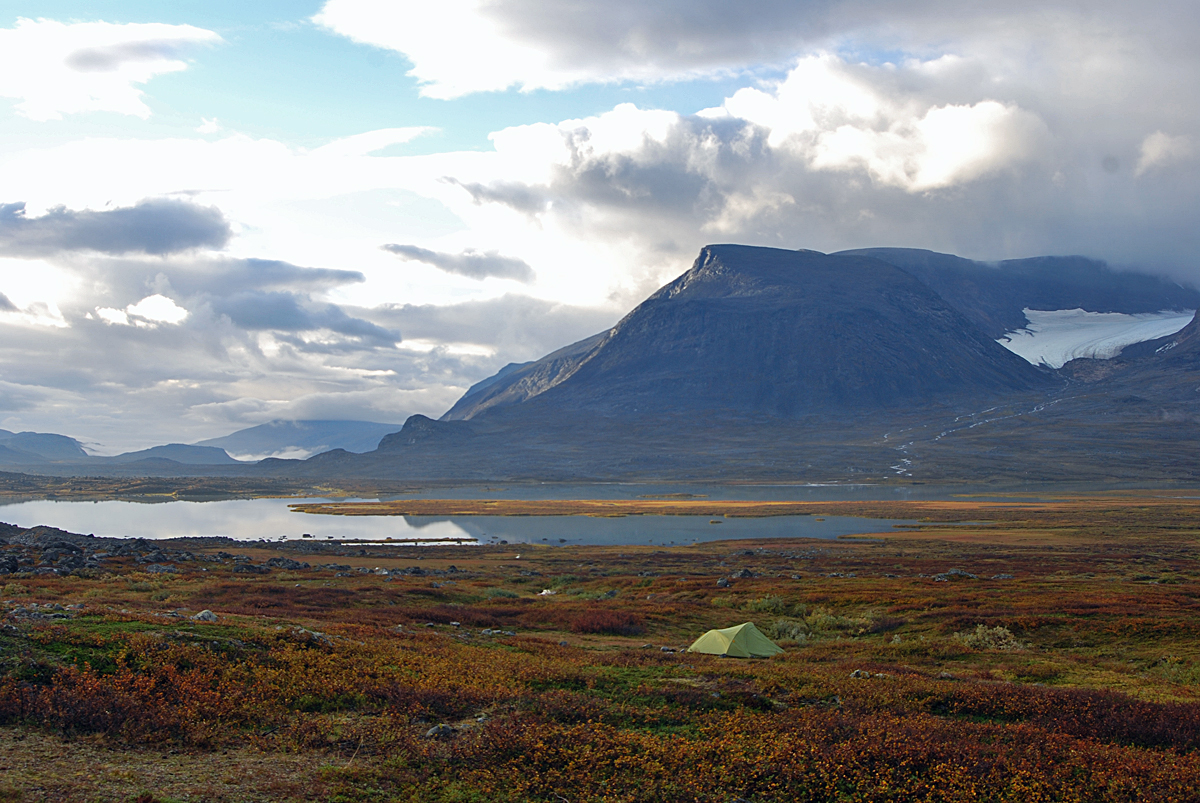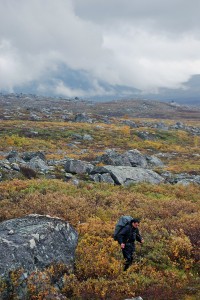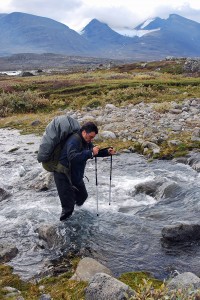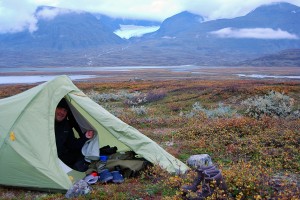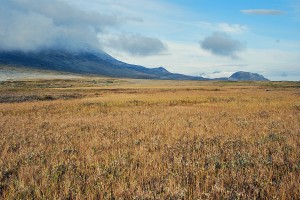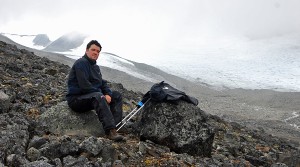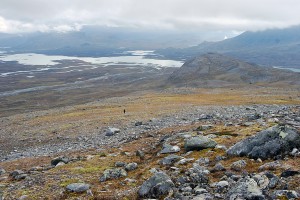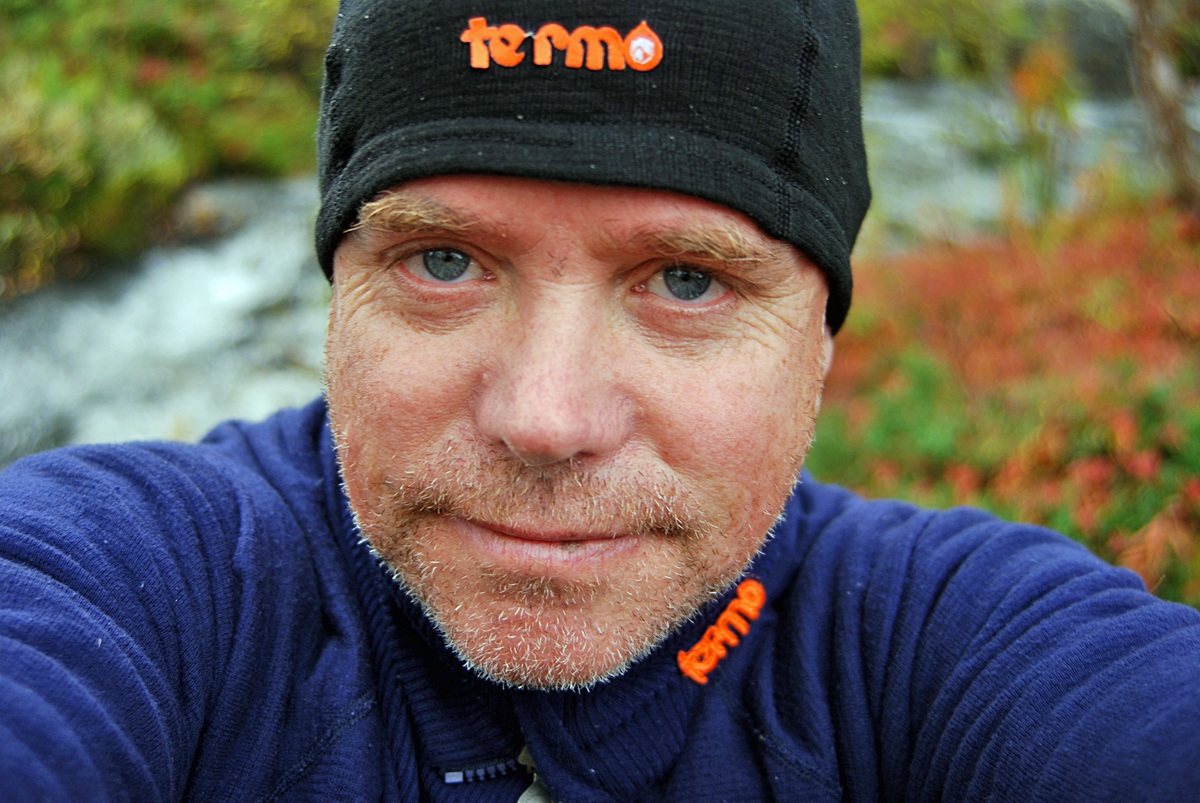This is the second article in a series of three about an autumn trek through what is called the last real wilderness of Europe, Sarek National Park. It was, once again, initiated by the the independent thinking London business man and my great friend with the name Sundip Chaterrjee.
“This is hell!” Sundip volunteered positively when we met up an hour later, after leaving the river crossing; “These scallywags of bushes, they are dangerous!”
My map had clearly showed us that there would be a couple of kilometers of thick willow brushwood waiting for us, or as I later called them, low stunted bush. But it would allow us to keep height, which most times is an advantage on the mountain and I figured;
“How thick can they be?”
Thick is the answer. It drizzled, clouds were threateningly low, a light north-easterly wind and I think it was the mud and water below the bushes which were most challenging. When I run up against a challenge like this, I just put my head down and just bulldoze my way through. No matter what is in the way. So that is what I did and I only stopped on and off to check off were we best should get out of it. On and off I saw Robert appearing in the horizon behind me, engulfed by the high bush, looking determined. I was already sure he wouldn´t appreciate these….plants….luckily, I eventually found a good way out and realized that it would have been wiser to go down to about 800 metres above sea level and stay on that curve. It looked far better. A statement Sundip agreed with when he turned up and said:
“I am not going it to that hell again!”
We were basically soaked. The crossing, the bush and the continuous drizzle had hit us into the bones. So I figured we better find a camp after the next river crossing, which wasn´t to far off. Visibility was still poor and we didn´t see much of the spectacular scenery. However, that is the beauty of on and off having poor visibility, because once the cloud and the mist opens up, the scenery gets even better! Which happened an hour later, with the views over the volcanic looking Slugga in the south and Ähpars glacier appearing on and off in the south east, was enough to keep the spirit very high. Which was needed, because once we reached the river called Sluggajåkkhå, we realized that it was getting late, rain had been pouring down all day and the river was deep and fast. It is always better to cross early in the morning. We were also tired and it turns out the crossing was far harder than the first one and I even got my underpants wet and soaked. But we got through eventually and plodded on for awhile. My hope was that we would reach the only permanent bridge in the park, the one over the mighty Gugghesvakkjåkkhå, before nightfall. But we decided to put camp not far from it, at a small stream offering a spectacular view over two mighty glaciers on Ähpar, the lake Lietjitjavvre and we even saw the mighty jagged edge of Bierikbakte Montain! It couldn´t have been a better place!
It was as good next morning when we woke up early. The lake was like a mirror and most important, directly in the east we could clearly see our goal of the day, Voujnesthjåkkå at 1942 m.a.s.l and the big glaciers next to it, like Voujnesjiegna, Sarvaijjiegna and even my great winterpassage glacier, Oarjep Sarekjiegna towered by Swedens second highest peak, Stortoppen on Sarektjåhkkå.
I knew already when we set out in the morning that we wouldn´t reach the top. I hadn´t slept a second, due to my cold, and Robert still didn´t sleep well in his new tent. It takes time to acclimatize. But the good thing, being outdoors, is that life is so much easier after sleeping poorly outdoors. One still feel refreshed!
It took us two hours to cross the bridge, walk over the wet but beautiful marsh and start climbing upwards. The climb is really easy until one reaches the rocky part at about 1300 meters and than it is just ordinary scrambling. Took us another two hours up to get a very good view over the glacier. At this time, however, clouds and mist had arrived, though views over the lake area and valleys behind us was still spectacular. But we decided to call it a day.
“Was it worth the effort?” I asked a tired Sundip on the way down, who once again, had slogged his way to his goal. He nodded in happiness. It took us another two hours to return in a slow drizzle.
Part three will follow on Friday the 23rd. For more photos from this trip, go to here! For a more professional viewing of a few of them, go to here!
